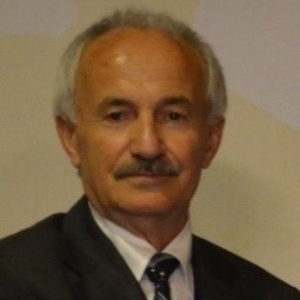Title : Advances in heterogeneous catalysis for green conversion of propene to aldehydes and alcohols
Ram Sambhar Shukla, CSIR-Central Salt and Marine Chemicals Research Institute (CSMCRI), India
Conversion of propene to aldehydes and alcohols are industrially important reactions and are carried out by hydroformylation of propene using syn gas, a mixture of carbon monoxide and hydrogen gases. Propene hydroformylation to n- butanal had a great commercial importance, b [....] » Read More








Title : Application of vanadium, tantalum and chromium single-site zeolite catalysts in catalysis
Stanislaw Dzwigaj, Sorbonne University, France
The metal ions well dispersed at zeolite framework are considered to be active sites of catalytic processes. Therefore, the incorporation of these metals into zeolites as isolated tetrahedral sites appears to be the important task. We have earlier shown that the incorporation of [....] » Read More
Title : Influence of various catalysts on H₂ enhancement and CO2 capture during syngas upgrading
Enrico Paris, CREA-IT & DIAEE, Italy
Biomass gasification represents a promising thermochemical route for the valorization of agro-forestry residues, offering a sustainable alternative to conventional waste-management practices while enabling the production of a versatile fuel: syngas. This gas mixture, typically [....] » Read More
Title : Personalized and Precision Medicine (PPM) as a unique healthcare model via bi-odesign, bio- and chemical engineering, translational applications, and upgraded business modeling to secure the human healthcare and biosafety
Sergey Suchkov, N.D. Zelinskii Institute for Organic Chemistry of the Russian Academy of Sciences, Russian Federation
Traditionally a disease has been defined by its clinical presentation and observable characteristics, not by the underlying molecular mechanisms, pathways and systems biology-related processes specific to a particular patient (ignoring persons-at-risk). A new systems approach to [....] » Read More
Title : Advanced nanostructures for carbon neutrality and sustainable H₂ energy
Tokeer Ahmad, Jamia Millia Islamia, India
Advanced materials based heterogeneous catalysis involving photochemical and photoelectrochemical water splitting is an ultimate source of hydrogen generation as renewable green energy for tackling the ongoing fuel crisis. Carbon based materials are ideal for overall water splitt [....] » Read More
Title : The Concept and Implications of Low Carbon Green Growth
Dai Yeun Jeong, Asia Climate Change Education Center, Korea, Republic of
Contemporary era is defined as a risky society in terms of environmental problems. As we know, the United Nations has adopted two important agendas towards the present and future socioeconomic development at a global level in relation to environmental problems since 1992 when Rio [....] » Read More
Title : Antibody-proteases as a generation of unique biomarkers, biocatalysts, potential targets and translational tools towards nanodesign-driven biochemical engineering and precision medical practice
Sergey Suchkov, N.D. Zelinskii Institute for Organic Chemistry of the Russian Academy of Sciences, Russian Federation
High impact of Ab-proteases can be used to monitor both clinical and subclinical courses of chronic autoimmune inflammation to predict stepwise transformations of the course, starting from the pre-illness and to prognosticate the clinical illness finally. This information can all [....] » Read More
Title : Distant binuclear vanadium V(II) cationic sites in zeolites and their reactivity
Jiri Dedecek, J Heyrovsky Institute of Physical Chemistry , Czech Republic
Divalent cations stabilized in the framework of silicon rich zeolites represents redox catalytic sites applied in number of redox catalytic reactions (e.g. N2O and NOx abatement, selective oxidation of methane to methanol). Nevertheless, the attention was focussed on metals with [....] » Read More
Title : Oxidation of methane to methanol over pairs of transition metal ions stabilized in the zeolite matrices
Jiri Dedecek, J Heyrovsky Institute of Physical Chemistry , Czech Republic
Selective oxidation of methane to methanol represents one of the possibilities for gas to liquid transformation of this key energy source. Recently were developed systems based on binuclear transition metal ions sites (formed e.g. by Fe(II) ions) capable of splitting molecular ox [....] » Read More